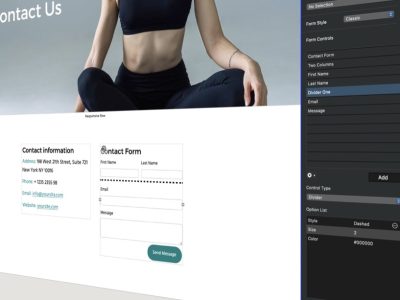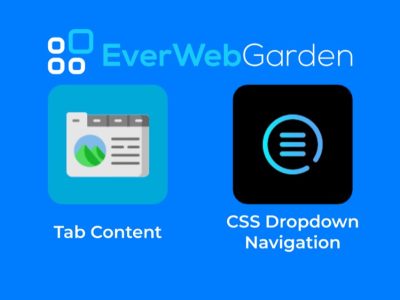A sitemap is a simple way to give your visitors a birds eye view of your website and what’s available within it. A sitemap is a great way to help your visitors find pages that you do not want to include in the navigation, but should still to be discoverable anyway.
A sitemap is a collection of hyperlinks to all of the pages in your site. If you have a small to medium sized site it’s likely that all of its pages will be placed in a sitemap in the footer of the page. If you have a large site containing many pages, you may want to have a limited selection of page links in the page footer or a specific ‘Sitemap’ link that takes you to a dedicated sitemap page where you can list all of the site’s page links.
Why Use a Site Map?
There are many good reasons to include a sitemap in your website!
- A Sitemap allows your visitors to easily find pages in your site that are important but which you don’t want to, or need to, emphasise or include elsewhere.
- The contents of a sitemap may also help fulfil specific business obligations. Sometimes companies need to include legal, regulatory or other forms of mandatory text in their website. Often the requirement is that this type of text should be easily accessible somewhere on the site so that visitors can easily find it. Therefore, having a link to such a page in the sitemap satisfies such obligations without having lots of legal text front and center on your pages.
- Keeping your page design clean and simple makes it easier for your visitors to navigate and use your site and its content. The same rule should be applied when you set up your site’s navigation menu. If you have a large site with a lot of pages, your navigation can become cumbersome. A sitemap may be the ideal way of unburdening your navigation menu whilst still leaving your pages easily accessible.
- A Sitemap is also great for your SEO as it uses hyperlinks to other pages in your site. Additionally, adding external page links to your site will also be good for your SEO.
Sitemap Form and Placement
Usually a sitemap is placed in the footer of every page of your EverWeb created site so that it’s always available, much like a navigation menu at the top of the page is always available to your site’s visitors. If you’re using a Master Page in your site, put the sitemap in its footer as this will reduce your sitemap maintenance load if you decide to make changes to your site later on.
Sitemap Parameters
In theory, a sitemap is a complete map of your whole site, but in practise it’s down to you to determine the scope of your own sitemap. There may be pages that you don’t want in the the sitemap, e.g. the ‘404 Page Not Found’ page, directory pages that redirects to one, or more, child pages, or payment processing pages e.g. ‘thank you for your order’ type pages. If your site contains over 30 pages you probably will not want to have all of them listed in a sitemap in the footer of every page. You may either want to select only the pages that you think are the most important and relevant to your visitors in the sitemap, or you ay want to add a link to a dedicated sitemap page in your site that lists all the page links in one place.
Building Your Own Site Map
When it comes down to creating your own sitemap, how you make it depends on the size of your site and whether you want all or only some of your pages to be discoverable via the sitemap. Here are some suggestions of different ways to create your own sitemap:
- Use The Navigation Menu Widget. If you have only a few pages in your site and they’re all included in a single level navigation menu widget at the top of your page, why not just copy and paste the navigation in to the footer section of the page. This is the easiest and simplest of sitemaps to create and it is also maintenance free as it will grow and shrink automatically when you add or remove pages from your site.
- Use a Simple Hyperlink List. You can create a sitemap simply by entering in text labels in TextBoxes then hyperlinking each piece of text to its corresponding page.
- Use a Listing Widget. This is most sophisticated option but probably also the most robust in terms of formatting. You can use EverWeb’s own built in FlexBox or Text Section widgets, or use a third party widget such as the Lists Advanced widget from EverWeb Garden or the Responsive FA Grid Widget from Roddy McKay’s EverWeb Widgets website.Depending on the number of pages in your site and the scope of your sitemap, you may need to use more than one copy of the widget you have chosen if you are including the sitemap in the page Footer.Sitemap Maintenance
There are a couple of important things to consider when creating a sitemap: testing and maintenance. As the sitemap is a collection of hyperlinks it’s important that you test each link to make sure it links to the right page before publishing your site. There’s nothing worse for visitors to your site than broken links! Just in case, always remember to create a ‘404 Page not found page’ to keep visitors within your site if ever they do happen to come across a broken link!Maintaining your sitemap is also important but can also be time consuming. Using a Master Page, or a dedicated sitemap page in your site, is a good idea as you will then only have to maintain one sitemap. Don’t forget that you’ll need to update your sitemap whenever you add or delete pages from your website. If you change the name of the page you may also need to change its text label in the sitemap to match the new name.
Creating a sitemaps a great benefit to your visitors as they can find the pages in your site with ease. It’s also beneficial to your business too as it helps improve your SEO, keeps your customers within your website and helps them explore your site contents fully!










Comments